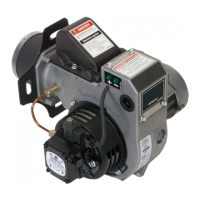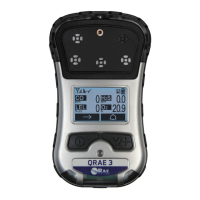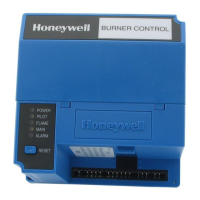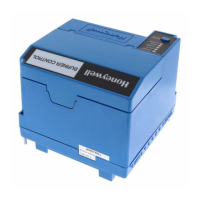18
Honeywell Titan SCBA, 20132
tank band, tank band latches, cylinder valve, or back-
pack.
2. The SCBA mounting position should prevent any
part of the SCBA from being slammed in a door or door
hinge.
3. Use an SCBA hard case or soft bag for transporta-
tion in a car, truck, or truck bed.
4. If the SCBA is not kept in a case or bag, secure it to
prevent rolling, sliding, or bouncing, which could cause
damage.
L. Interface Considerations
1. Protective hoods, if used, must be donned over the
head harness after a satisfactory facepiece t check
has been achieved.
2. Ensure that the audible and visual low air alarms
and PASS alarm (if used) remain functional by not al-
lowing turnout gear, ice, re ghting equipment, or tools
to cover these devices.
3. Do not mount other re ghting tools in such a way
that they interfere with the function of the SCBA.
VII. CYLINDER FILLING AND SAFETY
WARNING
• You must read and understand all warnings
and instructions provided on the cylinder
DOT warning label and in instruction
manuals before using the cylinder/valve
assembly.
• Only trained personnel may store, fi ll,
service, maintain, handle, use, or dispose
of cylinders used with this SCBA. Follow
the guidelines of the Compressed Gas
Association (CGA) pamphlets P-1, C-1,
C-2, C-6, C-6.1, C-6.2, G-7, and G-7.1, as
appropriate. Always follow established
safety precautions when recharging
cylinders.
• Do not alter cylinders used with this SCBA.
• Fill only to the specifi ed service pressure.
Do not overfi ll.
• Do not fi ll a leaking cylinder. Depressurize
immediately.
• Do not tamper with the safety pressure
relief device on the cylinder valve. Rapid
depressurization when the safety pressure
relief device activates will cause excessive
noise. During rapid depressurization,
cylinders may become ballistic and cause
injury. Stay clear of cylinders when the
safety relief valve is activated.
• Do not fi ll the cylinder if unraveling or
charring of composite fi bers occurs.
• Do not fi ll or use the cylinder if you have
any doubt about its suitability for recharge.
Return it to a certifi ed hydrostatic test
facility.
• Do not expose cylinders used with this SCBA
a. When replacing a cylinder of the same diameter
or smaller diameter:
i. Flip the cam-over buckle on the right side up
and slide the cylinder in until the dome of the
cylinder rests on the two protrusions of the bat-
tery cover.
ii. With the cam-over buckle on the right side
fully ipped up, adjust the tank band snug
against the cylinder by squeezing the tank
band so the teeth of the engagement clip
release from their slots in the tank band. Then
push the tank band down toward the backplate.
iii. With the tank band adjusted snug (but not
tight) against the cylinder, re-engage the two
teeth into the nearest slots on the tank band.
iv. Flip the cam-over buckle down toward the
backplate until the release latch snaps into
place. The cylinder should be tightly held in
place.
b. If changing to a larger size cylinder:
i. With the cam-over buckle on the right side
fully ipped up, squeeze the tank band so the
teeth of the engagement clip release from their
slots in the tank band.
ii. Grasp the tank band toward the right side
and pull it away from the backplate and
through the tank band cam-over buckle until it
is open enough to slide in the larger cylinder.
iii. With the cam-over buckle on the right side
still ipped up, slide the cylinder into the tank
band with the cylinder valve pointing downward
until the dome of the cylinder rests on the two
protrusions of the battery cover.
iv. Push the tank band down toward the
backplate until it is snug (but not tight) against
the cylinder. Re-engage the two teeth into the
nearest slots on the tank band.
v. Flip the cam-over buckle down toward the
backplate until the release latch snaps into
place. The cylinder should be tightly held in
place.
WARNING
Check the cylinder latch each time the
cylinder is replaced. Adjust the cylinder
band to match the cylinder size and ensure
that the cam-over buckle is securely locked
in place. Failure to comply with this warning
may lead to personal injury, illness, or death.
K. Transportation
Recommended methods of transportation include the
following:
1. Mounting brackets inside a re apparatus storage
compartment or integrated into a seat should attach to
the cylinder only. Securely mount the SCBA and verify
that the bracket does not straddle or interfere with the
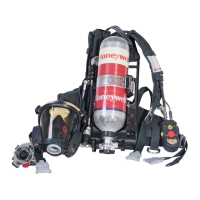
